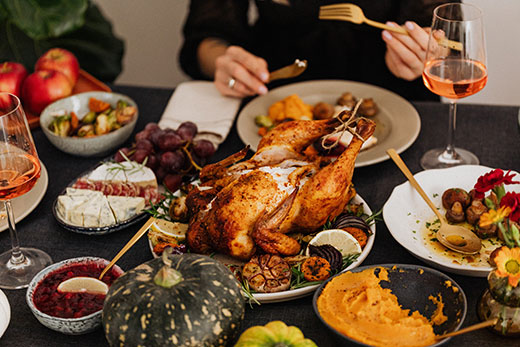Nobody wants the gift of foodborne illness during the holidays. Kansas State University food scientist Karen Blakeslee says food safety often begins with the choice between purchasing a fresh or frozen turkey.
“If you choose fresh, be sure to place an order with your grocer or butcher shop and pick it up 1-2 days before the meal, then store it in the refrigerator,” Blakeslee said. “Frozen turkeys can be purchased any time and stored in the freezer.”
Frozen turkeys are best thawed in the refrigerator or in cold water, Blakeslee adds. In the refrigerator, plan on at least 5-7 days for a 20-pound turkey. In cold water, allow about 30 minutes per pound of turkey. Make sure your refrigerator temperature is set between 35-38 F.
“When cooking the turkey, remember that 325 F is the lowest oven temperature to safely cook turkey,” Blakeslee said. “Use a food thermometer to be sure it reaches a minimum internal temperature of 165 F.”
If you only have one oven, use a slow cooker for hot dishes. A tabletop roaster oven can be used like a regular oven for many items. Even electric pressure cookers can prepare dishes safely.
Two Turkeys, One Oven
When cooking two turkeys at the same time, make sure there is enough oven space for proper heat circulation. The cooking time is determined by the weight of one bird — not the combined weight, Blakeslee said.
Use the weight of the smaller bird to determine cooking time. Use a food thermometer to check the internal temperature of the smaller bird first and then check the second bird. The internal temperature should be a minimum of 165 F.
“Check the internal temperature in the innermost part of the thigh and wing and the thickest part of the breast,” Blakeslee said.
Blakeslee, who is coordinator of K-State’s Rapid Reponse Center for Food Science, publishes a monthly newsletter called You Asked It! that provides numerous tips on food safety. More information is also available from local extension offices in Kansas.



